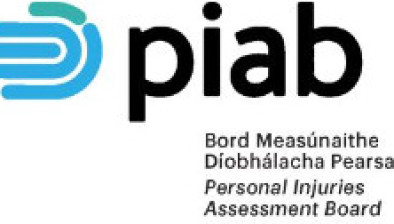High Court: Student awarded €92K in damages for injuries caused by collision
A 20-year-old woman who was injured when the car in which she was a passenger was involved in a collision has been awarded €92,115 in damages for pain and suffering to date and into the future.

About this case:
- Citation:[2019] IEHC 425
- Judgment:
- Court:High Court
- Judge:Mr Justice Charles Meenan
Finding the woman to be an honest and truthful witness who did not seek to exaggerate or embellish her various complaints, Mr Justice Charles Meenan considered the continuing effects of the injuries on her working, social and recreational life, including the fact that she had not been able to play camogie since the accident which took place when she was 16.
Background
On 26 December 2014, Shannon Ryan was a passenger in a car being driven by Jack Gill when it was involved in a collision. She was wearing a seatbelt at the time and liability was not an issue in the High Court.
The impact of the collision was described as “severe”, and Ms Ryan was taken to University Hospital Limerick where she had a Glasgow coma scale of 8/15. In the High Court, Mr Justice Charles Meenan explained that a Glasgow coma scale of 3/15 would “represent a person being almost entirely non-responsive”, so it was clear that there were serious concerns for Ms Ryan’s welfare at that time.
Ms Ryan had no recollection of the accident, and while in hospital she developed a severe migraine, and numbness in her right upper and lower limbs. A CT scan showed no evidence of brain injury.
Injuries and medical evidence
Ms Ryan’s injuries consisted of neck and upper back pain, and recurrent headaches together with photophobia. She also sustained an abrasion to her right tibia which has since healed, but has resulted in slight discolouration which is more apparent after a shower or exposure to the sun.
Mr Justice Meenan said there was a considerable amount of medical evidence available to the court. In particular, Mr Justice Meenan preferred the evidence of the Consultant Orthopaedic Surgeon and Consultant Neurologist who gave evidence on behalf of Ms Ryan.
The Consultant Orthopaedic Surgeon concluded that Ms Ryan had developed a chronic pain syndrome with an established pain pattern, and that his findings were consistent with ongoing muscle spasms resulting in the symptoms described by Ms Ryan.
Mr Justice Meenan said the Consultant Neurologist was particularly instructive on the matter of the headaches experienced by Ms Ryan since the accident. The court heard that the headaches, together with dizziness and photophobia occurred “once or twice a week and are noted to be 7/10 in severity but improve within an hour or two after taking paracetamol”. The Consultant Neurologist said the symptoms were “consistent with post-traumatic headaches”, and that a full recovery was “very unlikely” given the lack of significant improvement in over four years since the accident. While accepting no significant abnormality present on MRIs, the Consultant Neurologist was fully satisfied as to the genuineness of Ms Ryan’s complaints and “considered the absence of such abnormalities to be as a result of the technical limitations of MRIs”.
Mr Justice Meenan described Ms Ryan as “an honest and truthful witness who did not seek to exaggerate or embellish her various complaints”. He considered Ms Ryan having to give up camogie as a particular loss given her ability in the sport, adding that this must deprive her of other aspects of her social life. Mr Justice Meenan was also satisfied that Ms Ryan took all reasonable steps to mitigate her injuries, including physiotherapy and medication – noting that he accepted “her reluctance to take painkillers on a frequent and ongoing basis due to her young age”.
Having regard to the “very guarded” prognosis given by the Consultant Orthopaedic Surgeon and Consultant Neurologist, Mr Justice Meenan said that since Ms Ryan was only 20-years-old and has a full life ahead of her, her circumstances may change and in future she may not be able to make the adjustments she currently does to reduce the effects of the recurring neck pain, upper back pain and headaches.
As such, Mr Justice Meenan said Ms Ryan was entitled to general damages for pain and suffering to date and into the future.
Damages
In assessing damages, Mr Justice Meenan referred to Nolan v Wirenski [2016] 1 IR 461 and Payne v Nugent [2015] IECA 268. Mr Justice Meenan said the law relating to general damages was comprehensively reviewed in BD v. Minister for Health and Children [2019] IEHC 173 and that he would follow those principles in assessing his award.
Mr Justice Meenan said that the Book of Quantum was of “very limited assistance” in assessing damages for complaints such as those of Ms Ryan for ongoing and regular debilitating headaches. Having regard to Mr Ryan’s age and the continuing effects of the injuries on her working, social and recreational life, Mr Justice Meenan assessed the damages as:
- €45,000 to date;
- €45,000 into the future.
Together with €2,115.11 for agreed special damages, Mr Justice Meenan made a decree in favour of Ms Ryan for €92,115.11.
- by Seosamh Gráinséir for Irish Legal News









